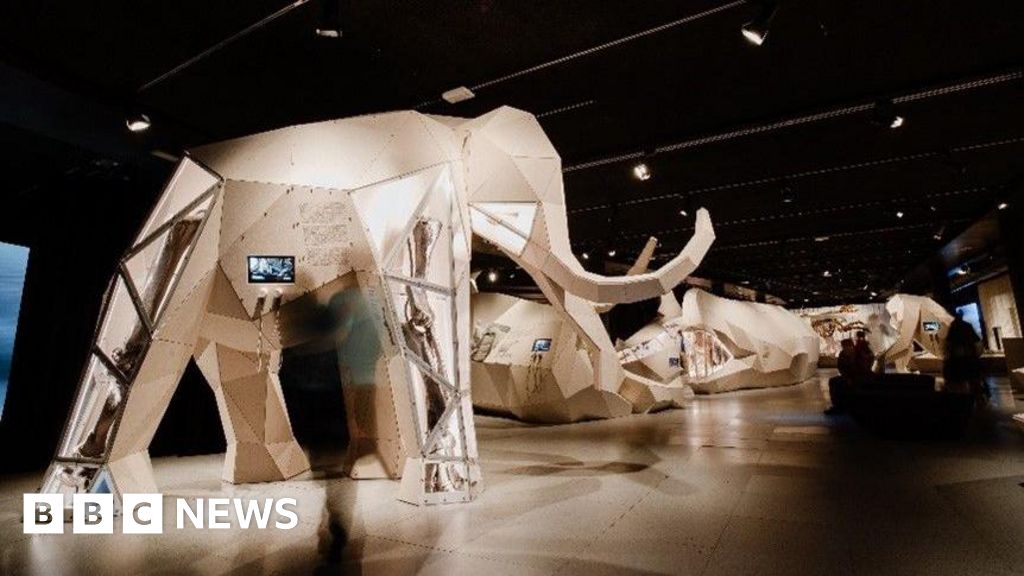- Arts
Report: Iran state media says an attack has begun on U.S. bases in Qatar and Iraq
时间:2010-12-5 17:23:32 作者:Technology Policy 来源:Forex 查看: 评论:0内容摘要:The Associated Press Health and Science Department receives support from the Howard Hughes Medical Institute’s Science and Educational Media Group and the Robert Wood Johnson Foundation. The AP is solely responsible for all content.The Associated Press Health and Science Department receives support from the Howard Hughes Medical Institute’s Science and Educational Media Group and the Robert Wood Johnson Foundation. The AP is solely responsible for all content.
Founded at Stanford University’s medical school in partnership with the state, it brings together people from every hospital with a maternity unit to share best practices on how to deal with issues that could lead to maternal injury or death, like high blood pressure, cardiovascular disease and sepsis.“When you look at the rate of maternal death in the United States compared to California, they basically ran neck-and-neck until it was established,” said Dr. Amanda Williams, clinical innovation adviser for the collaborative. “At that time they totally separated and California started going down. The rest of the country started going up.”

Denise Jones speaks with Dr. Allison Garnett during a prenatal appointment at the Oklahoma State University obstetrics and gynecology clinic. (AP Photo/Mary Conlon)Denise Jones speaks with Dr. Allison Garnett during a prenatal appointment at the Oklahoma State University obstetrics and gynecology clinic. (AP Photo/Mary Conlon)In the collaborative, hospitals get toolkits full of materials such as care guidelines in multiple formats, articles on best practices and slide sets that spell out what to do in medical emergencies, how to set up medical teams and what supplies to keep on the unit. The collaborative also tackles issues such as improving obstetric care by integrating midwives and doulas – whose services are covered by the state’s Medicaid program.

At first, some doctors resisted the effort, figuring they knew best, Williams said, but there’s much less pushback now that the collaborative has proven its value.MemorialCare Miller Children’s & Women’s Hospital Long Beach started participating around 2010. The collaborative helps “vet through all the research that’s out there,” said Shari Kelly, executive director of perinatal services. “It’s just so important to really understand how we as health care providers can make a difference.”

For example, if a woman loses a certain amount of blood after a vaginal delivery, “we know to activate what we call here a ‘code crimson,’ which brings blood to the bedside,” Kelly said. “We can act fast and stop any potential hemorrhage.”
She said the collaborative has also helped reduce racial inequities — bringing down the rate of cesarean sections among Black moms, for example.– and the latest in a string of attempts to make animal-to-human transplantation a reality.
This week, the 54-year-old grasped a walker and took her first few steps.“I was at the end of my rope,” Pisano told The Associated Press. “I just took a chance. And you know, worst case scenario, if it didn’t work for me, it might have worked for someone else and it could have helped the next person.”
Dr. Robert Montgomery, director of NYU Langone Transplant Institute, recounted cheers in the operating room as the organ immediately started making urine.Lisa Pisano looks at photos of her dog after her surgeries at NYU Langone Health in New York on Monday, April 22, 2024. Doctors transplanted a pig kidney into Pisano, who was near death, part of a dramatic pair of surgeries that also included a fix for her failing heart. (AP Photo/Shelby Lum)
- 最近更新
- 2025-07-07 11:27:51Alex Isley: Tiny Desk Concert
- 2025-07-07 11:27:515 tips to keep your pet safe — and comfortable — in extreme heat
- 2025-07-07 11:27:51New books out this week offer catastrophes that at least profess to be just fantasies
- 2025-07-07 11:27:51Want to try perpetual stew? Some tips for avoiding foodborne illness
- 2025-07-07 11:27:51Key takeaways from the U.S. airstrikes on Iran. And, how Iran could respond
- 2025-07-07 11:27:51HTSI. Inside Jean Cocteau’s dreamiest creation – now available to rent
- 2025-07-07 11:27:51Elite fellowship backed by Wall Street struggles amid diversity backlash
- 2025-07-07 11:27:513 hours ago An AI video ad is making a splash. Is it the future of advertising?
- 热门排行
- 2025-07-07 11:27:51booking excursions through the cruise line
- 2025-07-07 11:27:51Apple locked in last-minute App Store negotiations to avoid Brussels fines
- 2025-07-07 11:27:51How to build an emergency fund on any budget
- 2025-07-07 11:27:51Jacinda Ardern reflects on a career focused on the power of kindness
- 2025-07-07 11:27:51Interest rates on 60-month new car loans in the United States from January 2014 to May 2025
- 2025-07-07 11:27:51Press group sues L.A., alleging police abuse of reporters at ICE rallies
- 2025-07-07 11:27:51cruise ship's scheduled arrival time
- 2025-07-07 11:27:51Mixing family business with US trade policy in Vietnam
- 友情链接
- 12 of our most popular Fourth of July recipes The Pioneer WomanLooking for a healthier snack? Fuel up with these high-protein ideas Yvette Cooper says Palestine Action has ‘history of unacceptable criminal damage’ Allrecipes7 hours ago5 foods you should never cook in a slow cookerSome of these might surprise you The Genius Myth — or why it’s wrong to lionise the likes of Elon Musk 20 common old-school sayings and what they actually mean For Independence Day, NPR wants to know: What does freedom mean to you? US House of Representatives bans WhatsApp on government devices Estate & Retirement Planning Oil tumbles as traders respond to Trump’s ‘ceasefire’ The Pioneer WomanLooking for a healthier snack? Fuel up with these high-protein ideas Sprawling Heat Dome Could Smash June Records In Northeast, Midwest, Including 100s In… US House of Representatives bans WhatsApp on government devices 17 easy make-ahead dishes for stress-free summer picnics A-Z Animals Articles9 incredible lizards that look like dragons Report: Iran state media say attack has begun on U.S. bases in Qatar and Iraq Always PetsWeird things you do that tell your dog you’re leaving the house Why oil is tumbling — and stocks are rising — after Iran launched missiles at US base… For Independence Day, NPR wants to know: What does freedom mean to you? San Jose, CASan Jose, CALocal News San Jose, CASan Jose, CALocal News Allrecipes7 hours ago5 foods you should never cook in a slow cookerSome of these might surprise you 5 foods you should never cook in a slow cooker 12 of our most popular Fourth of July recipes 4 things to know about the U.S. airstrikes on Iran 4 things to know about the U.S. airstrikes on Iran Report: Iran state media say attack has begun on U.S. bases in Qatar and Iraq 17 easy make-ahead dishes for stress-free summer picnics 3 hours ago Home sales just posted their slowest May in 16 years Which goddess represents you, based on your zodiac sign
